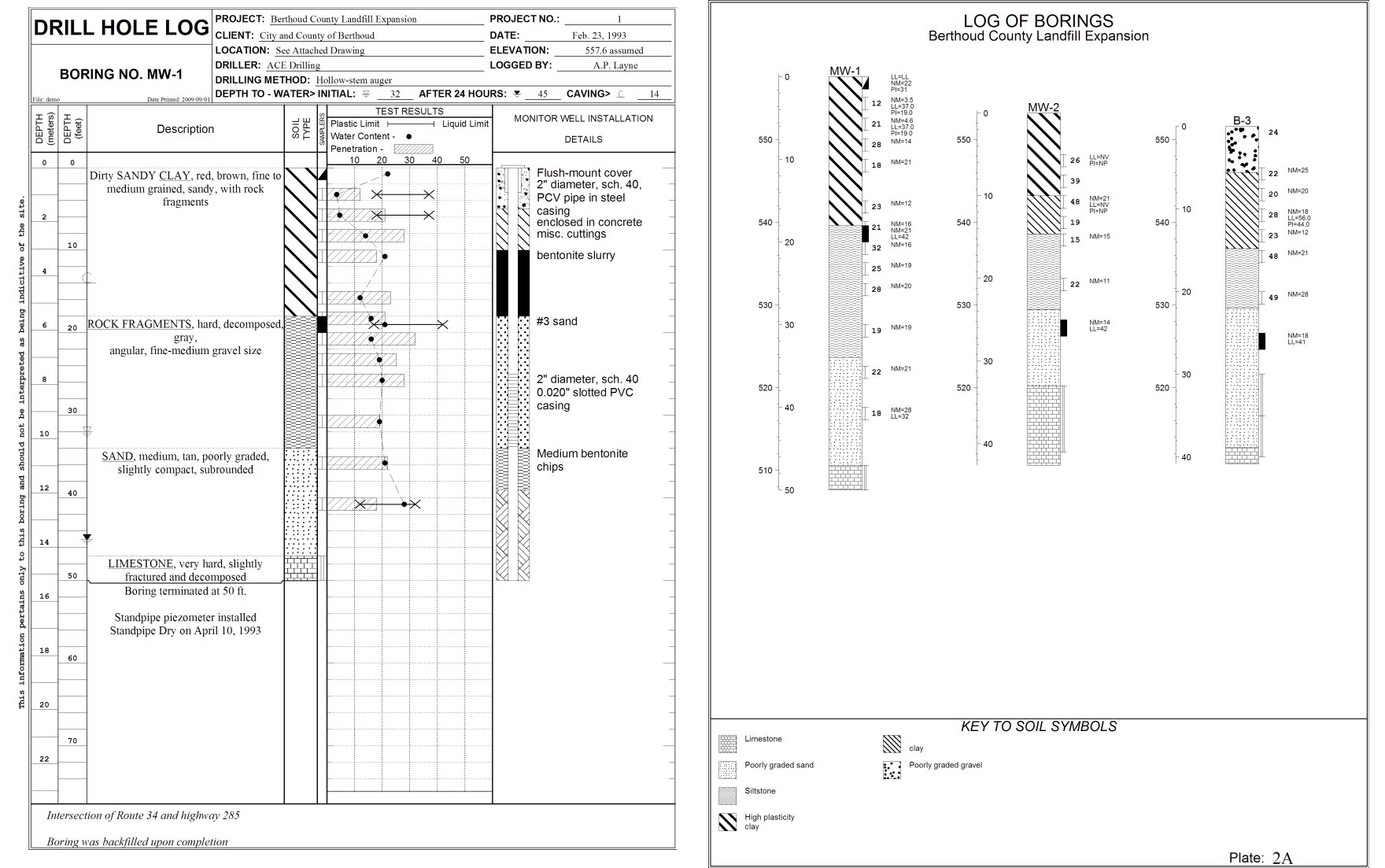Of course, LOGDRAFT has the ability to present logs of subsurface investigations: These logs may be formatted to report one boring, test pit or monitor well per report (called "single-source" reports) or multiple borings, test pits or monitor wells per report -- the latter are called "subsurface profiles", or "profiles" for short.

Single-Source (Boring Log) and Multi-Source (Profile) Reports
Comparison: Single-source reports may extend over multiple pages if the bottom of the borehole extends below the bottom of the first page. Boreholes presented on profiles only take up one page -- if the borehole extends below the bottom of the page, the information below the page bottom is discarded.
The software can also generate summaries of the data entered for a single boring or for multiple borings:

Comparison: In contrast to boring logs and profiles, which present subsurface data scaled vertically relative to the actual depths where the data were acquired, summaries present subsurface data in a table consisting of equally spaced rows.
LOGDRAFT can also produce a special kind of summary called a project summary, which basically lists every bit of information you've entered into a project. Project summaries are useful for data entry checking and as hard copy records -- they're covered in detail in this section in the Customization Guide.

LOGDRAFT also supports reports showing plan views of a site and special symbol legend reports that present a visual key to all of the graphical symbols used on a sequence of reports: These reports are covered in this page and this page.
Before a printed report may be generated, the program must be told something about the layout of the report. This process is done once for a given report form by using the facilities discussed in the Customization Guide. Once a form has been set up the program can combine it with data you enter in order to produce a printed page.
- LOGDRAFT has the ability to present your data in an unlimited number of different formats -- you can swap between formats without re-entering data. For example, a boring log report may be printed for a boring then the boring included as part of a profile, then laboratory testing data from the boring may be printed using a summary report.
- Most report forms are designed to print data that have been entered in specific units; for example, if a report form has a column for printing densities, it may require the density data be entered in kg/cm2. If you entered your data in different units than those required by the report form you want to use, you can a) manually convert and re-enter your data, b) modify a copy of the report form so that it accepts the units you used for entering your data, or c) modify a copy of the report form so that it automatically converts from your units to the ones used by the report (for instance, the form can be modified to automatically convert densities entered in pcf to densities entered in kg/cm2). You can learn how to do options b) and c) in the Customization Guide.